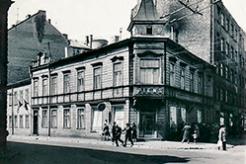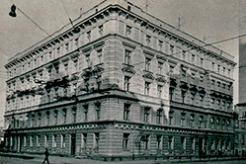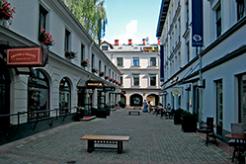




Author: Jānis Krastiņš, Dr. habil. arch.
Konstantīns Pēkšēns (8 March 1859, Mazsalaca Parish – 23 April 1928, Bad Kissingen, Germany, buried in Meža Cemetery, in Riga) was one of the most prominent Latvian architects. After the first professional Latvian architect Jānis Frīdrihs Baumanis, he was the epitome of the second generation of professional Latvian architects. His architectural legacy is directly related to the emergence of regional building art and its development in Riga. Among the master’s works there are great examples of Eclecticism, which prevailed in the 19th century, as well as magnificent jewels of Art Nouveau created in the early 20th century. Pekšēns remained a prolific architect until the end of his life. At least 250 multi-storey masonry buildings and no less than 110 wooden houses were built in Riga to his designs.
Architecture is mostly perceived unconsciously, unlike other visual arts, sculptures, paintings, cinema or other forms of art that one can choose whether or not to look at, listen to, or read. Architecture is a milieu surrounding people day and night; it forms the environment where people live, work and relax. Architects’ calling and mission is to create and improve this environment so that it harmoniously meets the needs of the entire community.As creators of cultural environment, architects are not only artists in a narrow sense of building art. Architects must also be able handle a number of economic, organisational and technical tasks.
Konstantīns Pēkšēns was very skilful in all those areas. He was born on the Nuķi estate near the town of Mazsalaca. In 1869, his family moved to Riga. In 1875, Pēkšēns began studies at the Engineering Department of Riga Polytechnic School that was renamed Riga Polytechnic Institute in 1896, and then at the Department of Architecture in 1880. He actively participated in the bustling social life at the institute, engaged in sports and was one of the founders of the Latvian students’ corporation Selonija. Pēkšēns graduated from the institute in 1885. For some time he worked in the architectural office of J. F. Baumanis, and then in 1886 he established his own practice. In 1888, Pēkšēns was one of the re-establishers of the Riga Architect Society which had fallen apart by that time. He was a member of the board of directors in several credit institutions and banks and a spokesman for the Riga Latvian Society. In 1909, he became a city councillor and after WWI he sat on many technical committees of the Riga City Council. Pēkšēns was also engaged in publishing of several Latvian newspapers. Pēkšēns’ company for assembling of sanitary equipment, which was the largest company installing central heating systems in Riga before WWI, became very well known and operated until 1940...
More information will be available in the virtual exhibition, which will be established till April 2016.